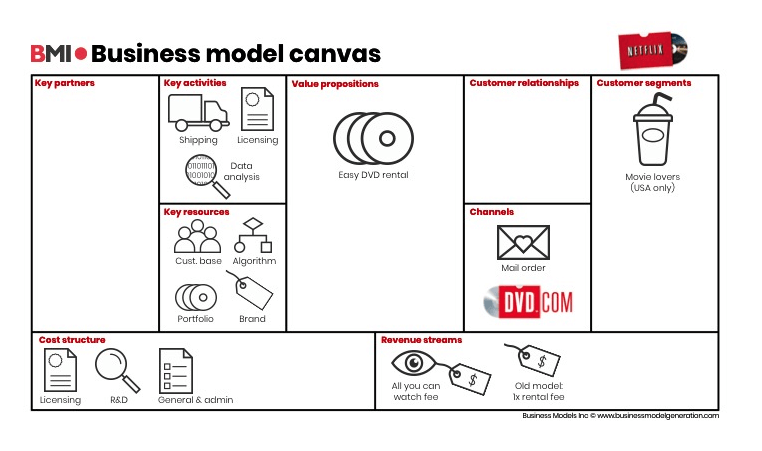How Netflix Transitioned to the Cloud and Boosted Revenue: A Digital Transformation Case Study

Do you recall the days when you had to order DVDs by mail to enjoy the latest movies from the comfort of your couch?
It’s almost hard to believe that about a decade ago, Netflix’s business model revolved around direct mail. You’d request a movie, line up a few more for the future, and eagerly wait for your first DVD to arrive at your doorstep.
Fast forward to today, and our thirst for instant gratification is quenched daily as we binge through episode after episode of fresh content. We can barely remember the era when we had to wait days for our entertainment instead of having it instantly available.
The transformation from mail-order DVDs to a cloud-based streaming service not only improved customer satisfaction but also catapulted Netflix to billions in revenue.
This shift to the cloud boosted customer loyalty and established a brand that competitors are still struggling to match.
Netflix stands as the epitome of digital transformation.
They revolutionized their entire business model and ventured into uncharted territory. Here’s how you can draw inspiration from their model to lead your contact center’s digital transformation.
How to Transition Your Operations to the Cloud, Inspired by Netflix
Two decades after starting as a DVD rental service, Netflix is now valued at nearly $145 billion.
They entered the market as a disruptor to traditional video rental stores like Blockbuster and Family Video. Founders Reed Hastings and Marc Randolph aimed to make video rentals more customer-centric. Renting videos back then was inconvenient and riddled with costly late fees.
Netflix introduced a whole new way to watch movies and consume content. As time progressed and their subscriber base grew, they continued to adapt to meet new consumer demands.
In 2007, they ventured into streaming video, offering customers a subscription for streaming alongside their traditional DVD rental service, allowing customers to choose their preferred method.
Since then, their subscriber base and revenue have seen exponential growth. Let’s examine their journey since the company went public.
Charting Netflix’s Growth: A Digital Transformation Case Study

Netflix’s incredible growth and adaptability caused their stock to soar by 6,230% over a ten-year period.
Remarkably, they managed this without drastic price hikes, always keeping their customers in mind.
While Netflix has adjusted prices over the years, they balance it by adding more value and services. For instance, in 2019, the Basic plan saw a $1 increase per month, while the Standard and Premier plans increased by $2 per month.
Despite these changes, the company invested around $15 billion in creating new content that binge-watchers love.
Following this price adjustment, Netflix observed a temporary dip in subscriber growth. However, analysts did not view this as a long-term issue. A similar dip occurred in 2010 when Netflix separated their streaming and video rental pricing models, and they rebounded successfully.
This was the first dip in subscriber growth in nearly a decade, which is remarkable. Revenue for the quarter still increased, indicating that the value of Netflix’s services outweighed the costs for most customers.
If you can consistently post positive revenue and grow into a multi-billion-dollar company in about 20 years, you’re certainly on the right track.
Key Strategies for Digital Transformation, Inspired by Netflix
- Stay True to Your Vision Netflix started with the idea of making movie-watching easier and more affordable. Though they didn’t want to remain in the DVD rental business forever, they had the foresight to predict shifts in consumer behavior. They realigned their strategies to fit their vision even as consumer trends evolved.
What You Can Do: As you make digital shifts in your contact center, keep your vision constant. Use your vision to guide decision-making and predict customer behavior using data and trends. Align your operations to your customer behaviors to realize your vision.
- Reinvent the Wheel if Needed Netflix grew to a $145-billion valuation in just 21 years by not sticking to outdated practices. They solved customer problems differently and more effectively than their competitors, as evidenced by the downfall of Blockbuster and Family Video.
What You Can Do: Tailor your strategies to your specific business needs. Listen to and understand your customers using better data and surveys. Identify and solve customer pain points instead of mimicking competitors. Focus on serving your customers better.
- Provide Multiple Customer Paths Netflix waited for the right infrastructure before entering the streaming market to avoid damaging their brand with poor experiences. They initially tested lower-quality streaming while continuing their DVD service, offering customers options.
What You Can Do: As you transition to digital, keep options open for your customers. Use data to understand customer preferences and coach your agents accordingly. Introduce changes gradually and ensure agents are available to assist through the process.
- Leverage Data for Personalization Netflix used data to understand viewing habits, fueling personalized content recommendations and binge-watching. Their global scale diversified their data, making their algorithm smarter.
What You Can Do: Track and analyze data from customer interactions to personalize experiences. Use trends to tailor customer service and drive business change. Customer data is a powerful tool for transformation, and addressing dissatisfaction can make a strong case for change.
Netflix took significant risks to transform their business, proving that stagnation is the biggest risk. Innovating and implementing big ideas is what sets leaders apart from laggards.
